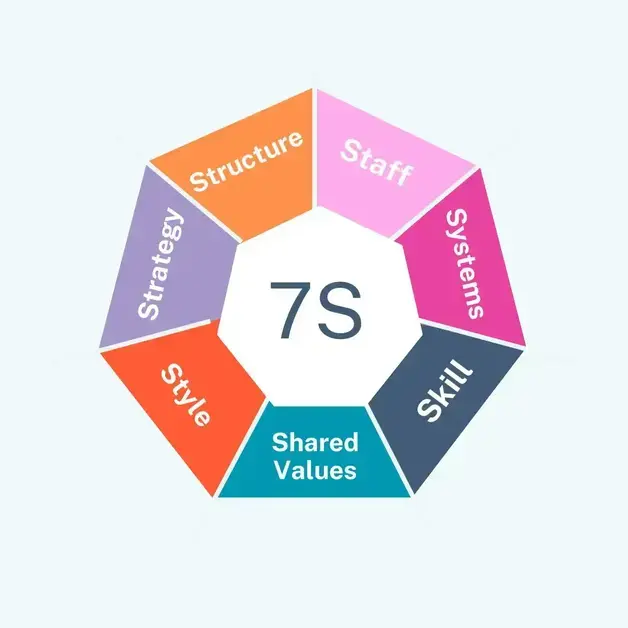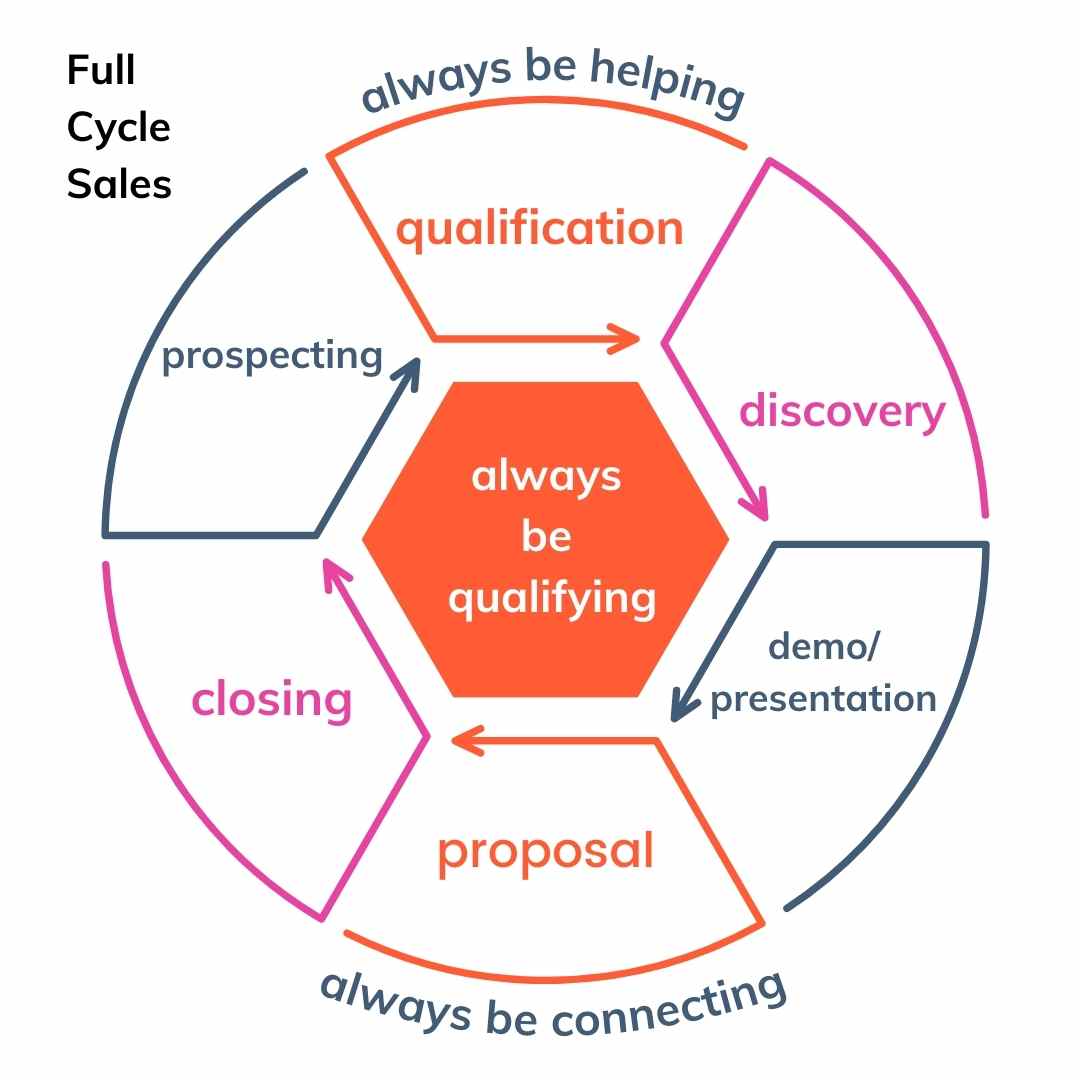HubSpot Partner Dublin & Belfast helping you win more B2B sales
HubSpot Partner located in Dublin and Belfast specialising in large complex Enterprise Sales through to Customer Service Operations Management...

Implementing a full-cycle sales model can provide businesses with a powerful tool to drive revenue growth and optimise their sales processes.
As B2B customers increasingly expect a more personalised level of service [McKinsey - the Big Reframe} a move to full cycle sales enables you to give your customers what they are asking for - exceptional customer experience.
Furthermore, this comprehensive approach empowers sales representatives to take ownership of the entire sales process, from finding leads to closing deals and puts your customers at the centre of your sales process.
By aligning your growth strategy with the objectives of full-cycle sales, you can streamline operations, reduce costs, and maximise your sales efforts.

In this article, we'll cover Big Business Agency's recommended approach for implementing a full-cycle sales model for your business.
It's prudent to revisit McKinsey's 7S model, especially in 2025 when B2B businesses need to 'do more with less' and reduce costs, simplify operations and increase efficiency. McKinsey 7-S Model (framework) emphasises the vital importance of coordination over structure in achieving organisational effectiveness.

We'll be leaving Skill, Shared Values, and Style for another day!
One of the critical elements to consider when implementing full-cycle sales is your growth strategy. Rather than trying to tackle every market opportunity, using tools like the Ansoff Matrix to map out your growth strategy is more pragmatic. This strategic planning tool can help you identify core strategies such as market penetration and market development, providing a clear direction for your sales efforts. By focusing on targeted growth opportunities, you can optimise your resources and increase the effectiveness of your sales efforts.
Reorganising your sales structure may also be necessary to leverage the benefits of full-cycle sales. You can reduce costs and optimise resources by reallocating staff to focus on either quota-carrying sales or digital marketing. Effective digital marketing has become essential, with B2B buyers increasingly relying on online research during their buying journey. By leveraging the expertise of your sales development representatives (SDRs) and business development representatives (BDRs), you can enhance your digital marketing efforts and drive better results. This reorganisation can lead to increased efficiency and improved sales performance.
The success of implementing full-cycle sales also depends on aligning goals and remuneration between sales and marketing staff. In this model, traditional metrics like marketing qualified leads (MQLs) and activity volume become less meaningful. Instead, the focus should be on the ability to target buyers throughout their buyer's journey and qualify them for the business forecast. By aligning the incentives and goals of your sales and marketing teams, you can foster collaboration and maximise the effectiveness of your full-cycle sales approach. This alignment ensures that both teams work towards the same objectives, driving revenue growth and increasing customer satisfaction.
The right systems are crucial to support your sales, marketing and customer service operations efforts in a full-cycle sales model. A single system that integrates sales and marketing functions can provide complete visibility into your business, allowing you to track every interaction across various channels such as social media, email, web, calls, and ads.
Tools like HubSpot Smart CRM and Sales Hub can be instrumental in achieving this integration. Additionally, intelligent content creation and distribution platforms enable sales representatives to access relevant and up-to-date content in real time, empowering them to engage effectively with prospects.
Furthermore, leveraging automated Social Selling without relying on email addresses can enhance your lead-generation efforts.
Finally, integrating your configure-price-quote process (CPQ) with ERPs like SAP, Dynamics, and Sage streamlines your quote-to-cash process and improves efficiency.
These systems combine to ensure that your sales and marketing teams have the necessary tools to succeed in a full-cycle sales model.
Implementing full-cycle sales requires a comprehensive Project Plan, including change management and systems Integration plans.
Discover more on full cycle sales enablement
 Yes, we have mentioned this before, and it's certainly worth repeating - please remember a task list is not a Project Plan!
Yes, we have mentioned this before, and it's certainly worth repeating - please remember a task list is not a Project Plan!
If you are ever faced with a Gantt chart or a task list referred to as a project plan, then run for the hills! While the schedule is essential, it is only one of seven critical elements of a robust Project Plan.
A project plan goes beyond a mere task list or schedule. It provides a comprehensive roadmap for the successful execution of a project, outlining not only the tasks and timelines but also the overall strategy, stakeholder communication, scope, delivery approach, and risk management.
An effective project plan begins with an execution charter, which serves as an executive summary of what is to be achieved. It includes the expectations of key stakeholders expressed in quantifiable terms, such as staff cost reductions, return on investment (ROI), sales win ratios, and forecast accuracy. Additionally, it outlines a comprehensive stakeholder communication plan to ensure that all relevant parties are involved and informed throughout the project.
Stakeholder identification is another crucial aspect of a project plan. It involves identifying the executives, managers, users, and influencers who are directly involved in or affected by the project. Their contact details should be documented to facilitate effective communication and collaboration.
The scope of the project is also a critical element of the project plan. It should include a detailed Requirements Definition and Specification, focusing on the complete sales playbook and the order-to-cash cycle. Clearly defining the scope helps ensure that all deliverables and objectives are well-defined and aligned with the overall project goals.
T![]() he delivery approach should be outlined in the project plan. This includes a detailed explanation of how the project will be delivered, including the methodology, standards, and Quality Assurance processes that will be followed. A well-defined delivery approach ensures that the project is executed efficiently and effectively, meeting the desired outcomes.
he delivery approach should be outlined in the project plan. This includes a detailed explanation of how the project will be delivered, including the methodology, standards, and Quality Assurance processes that will be followed. A well-defined delivery approach ensures that the project is executed efficiently and effectively, meeting the desired outcomes.
A detailed breakdown of tasks, including specific timelines and the resources required, is essential for successful project management. The project manager must ensure the availability of resources from the beginning to the end of the project. By creating a comprehensive project schedule, you can effectively stay on track, meet deadlines, and prevent any mismanagement of resources within the team.
This log is used for identifying and managing risks, assumptions, issues, and dependencies throughout the project. A comprehensive analysis of these factors helps mitigate potential risks and ensures that the project stays on track.
A project management log should be maintained, documenting all tasks and their assigned responsibilities. This log serves as a central repository of information, allowing project managers to track progress, monitor assigned tasks, and ensure accountability.
B2B Sales is complex and often involves extended sales cycles. Accordingly, B2B companies must adapt and evolve their sales models to remain competitive. Full-cycle sales offers a comprehensive approach that addresses the challenges of reduced cash, higher debt burdens, and smaller budgets.
Full-cycle sales moves the needle on these critical business objectives by reducing costs, increasing efficiency, and simplifying operations. Embracing this model and considering the key elements discussed above can position your business for success in future years
In your planning to implement a full-cycle sales model make sure you develop a project plan that is much more than a task list or a Gantt chart. Your Project Plan should incorporate various elements, but at a minimum, needs to include the critical seven elements: execution charter, stakeholder identification, scope, delivery approach, RAID analysis, and project management log.
By developing a comprehensive project plan, you can ensure your business enjoys successful project execution, mitigates risks, and achieves the desired outcomes.
So, remember, when it comes to project planning, don't settle for a simple task list - go for a robust and well-rounded project plan that encompasses all essential elements.
If you'd like to discuss how to make the move to full-cycle sales we'd love to chat with you,
Visit our Sales Consulting Services page to learn more about the Big Business Agency approach to B2B Sales and winning Big Deals.
Why is the full-cycle sales model better for customers?
In Depth look at the full cycle sales process
Full cycle sales rep v SDR/BDR/AE - what's the difference?
Optimising your pricing structure
What is a B2B eCommerce Agency?
Why not join us at SpokeSpeak? - a Sales and HubSpot focussed community that's open to all sales folk and HubSpot enthusiasts, experts and newbies as well as those of you who are simply Hub-curious 🤔
 Check out the next episode at SpokeSpeak.com
Check out the next episode at SpokeSpeak.com

HubSpot Partner located in Dublin and Belfast specialising in large complex Enterprise Sales through to Customer Service Operations Management...

Curious about Full Cycle Sales? Full-cycle sales is a sales model that requires the salesperson to prospect all of their leads and manage the deal...

How to get over 90% Pipeline AccuracyAccount Executives (AEs) face increasing pressure to generate their own leads. In fact, according to a keynote...